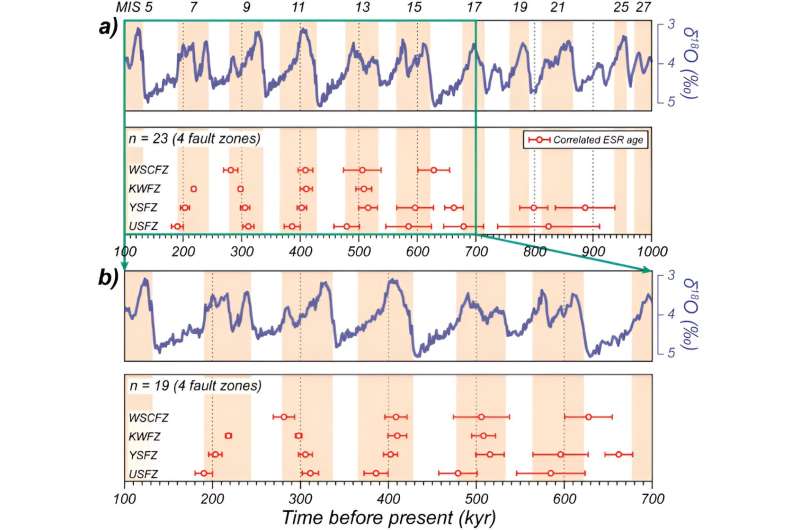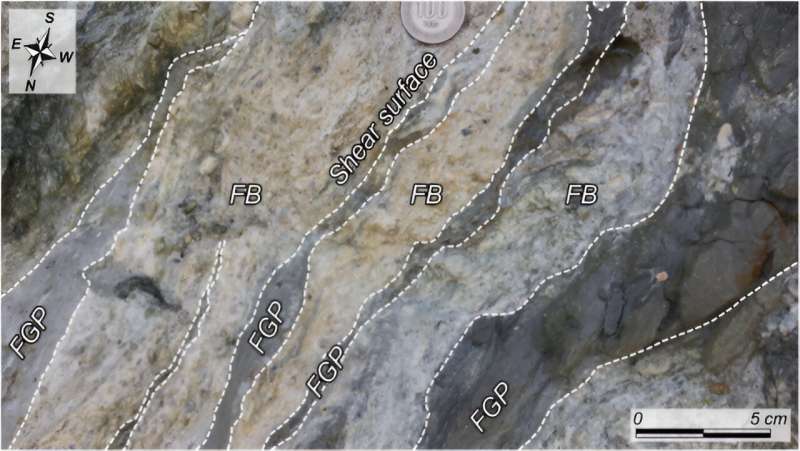November 9, 2023 feature
This article has been reviewed according to Science X's editorial process and policies. Editors have highlighted the following attributes while ensuring the content's credibility:
fact-checked
peer-reviewed publication
trusted source
proofread
Global warming–induced sea level changes could increase earthquake risk

Earthquakes often occur along plate boundaries, when sudden movements of the "stuck" plates release elastic strain energy, sending out seismic waves that result in the ground shaking familiar to many worldwide. More rarely, earthquakes occur within plates (intraplate) in zones of weakness, such as the reactivation of old faults or rifts.
Attempting to predict the location, timing and magnitude of earthquakes has been the focus of seismic scientists in recent years, though the planet's mighty movements still remain somewhat enigmatic. For example, scientists have been warning for many years that a devasting earthquake is 62% (+/- 15%) likely to hit Istanbul, Turkey, during the next 30 years.
The Korean Peninsula is situated along the eastern edge of the Eurasian Plate and has been a source of earthquake activity for millennia, influenced by multiple seismic zones—the subduction of the Pacific plate beneath the Philippine plate, and the convergence of the Indian and Eurasian plates, which resulted in the Himalayan mountain range.
During the time of historical and instrumental records, more than 4,200 earthquakes have been documented in the Korean Peninsula, most being category 1–4, though approximately 20% were category 5, causing some structural damage to buildings. The Gyeongju earthquake of 2016 was the largest on record in the region, with a magnitude of 5.8, and caused secondary issues such as ground fractures and liquefaction (when loose, water-logged sediments lose strength due to shaking and overlying structures collapse into the ground).
New research, published in Quaternary Science Reviews, has explored the possibility of the earthquakes being triggered by the global-scale activity of Earth's glacial cycles. Specifically, Man-Jae Kim and Hee-Kwon Lee, of Kangwon National University, South Korea, investigated the possible link to interglacial periods occurring over 100,000 year cycles.

The researchers used electron spin resonance (ESR) dating to age fault gouges, whereby microwave energy is absorbed by unpaired electrons in the magnetic field of particular radioactive elements within the rock as they decay, therefore allowing age determination as the unpaired electrons accumulate.
Fault gouges are fine-grained clay-like material tens of meters thick along the strike-slip fault planes where two landmasses move past each other and deform the intervening rock. These fault zones within the Korean Peninsula are complex, having experienced deformation overlays in opposite directions over time (changing from sinistral to dextral strike-slip motion).
Kim and Lee analyzed more than 450 ESR age dates and determined paleo-earthquakes in this intraplate setting coincided with five key interglacial periods (termed marine isotope stages 15, 13, 11, 9 and 7) over the last 650,000 years, based upon oxygen isotopes from benthic marine foraminifera (single-celled organisms). They postulate that rapid changes in sea levels due to the melting of expansive ice sheets during these climate intervals may have played a significant role in triggering seismic events.
One theory is that this may result from stress release due to glacial unloading, as the weight of ice over the landmass reduces with melting. Previous studies have shown that unloading can impact the seismic stress field several hundred kilometers from the ice sheet margin, thus expanding the possibility of intraplate earthquake activity.
However, given that Quaternary (2.58 million years ago to the present) ice sheets may have been too far from the Korean Peninsula to elicit such a response, the researchers instead suggest compressive stress on the underlying lithosphere from glacial meltwater loading causing rising sea levels across the Pacific Ocean may be the answer.
This research has important implications for modern day seismic activity as climate change exacerbates glacier melting and subsequently sea level rise, with the potential to trigger more earthquakes in the future. This will require seismic-prone areas to plan strategies to mitigate against the social, environmental and economic damage caused by earthquake events.
More information: Man-Jae Kim et al, Long-term patterns of earthquakes influenced by climate change: Insights from earthquake recurrence and stress field changes across the Korean Peninsula during interglacial periods, Quaternary Science Reviews (2023). DOI: 10.1016/j.quascirev.2023.108369
Journal information: Quaternary Science Reviews
© 2023 Science X Network





















